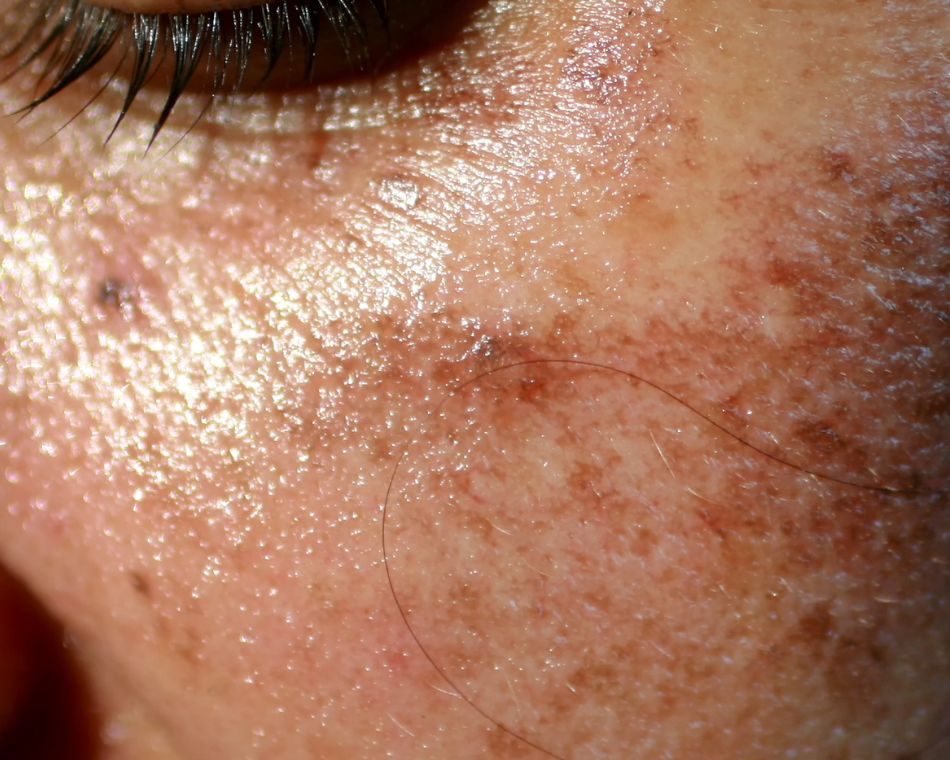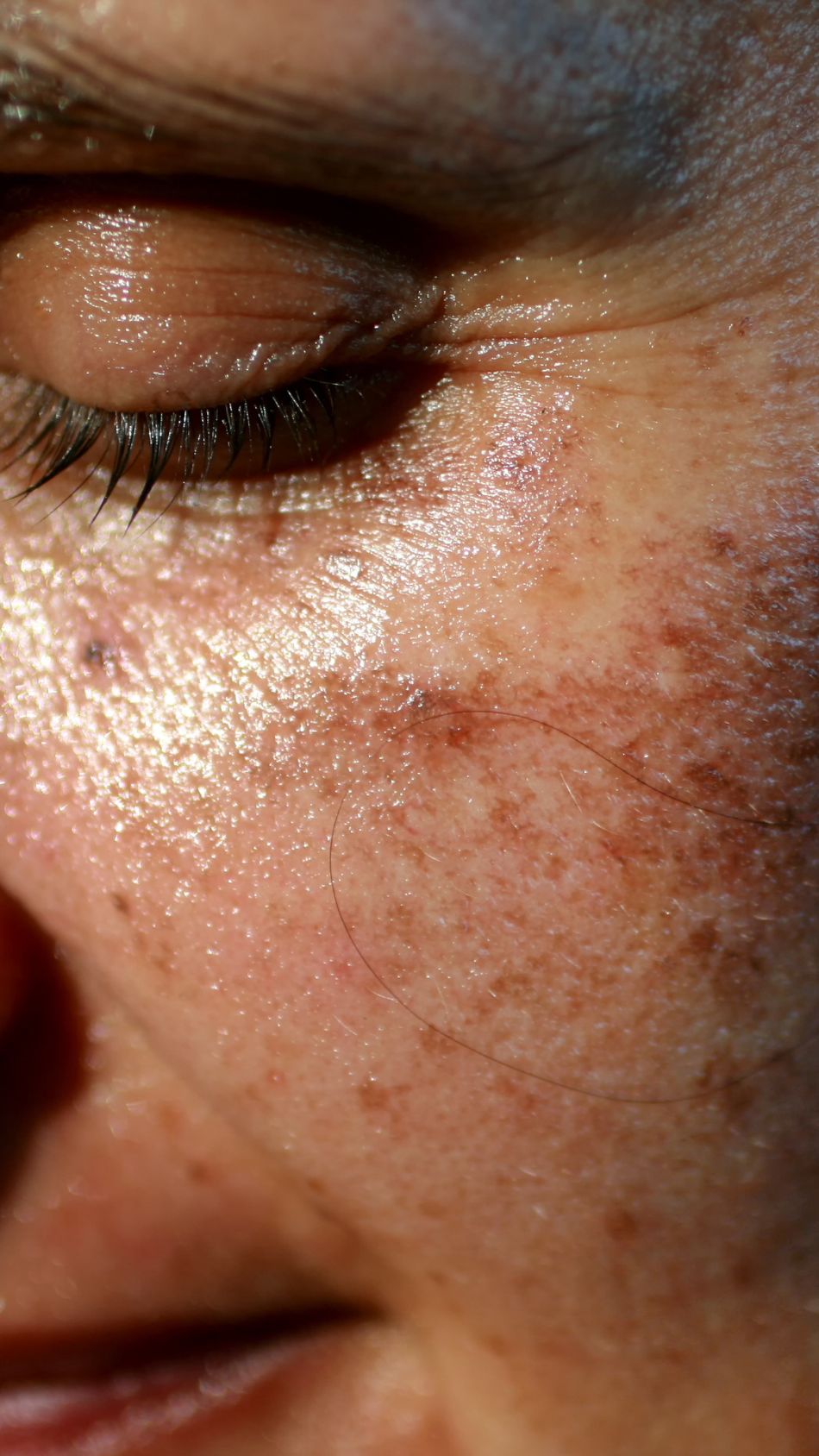
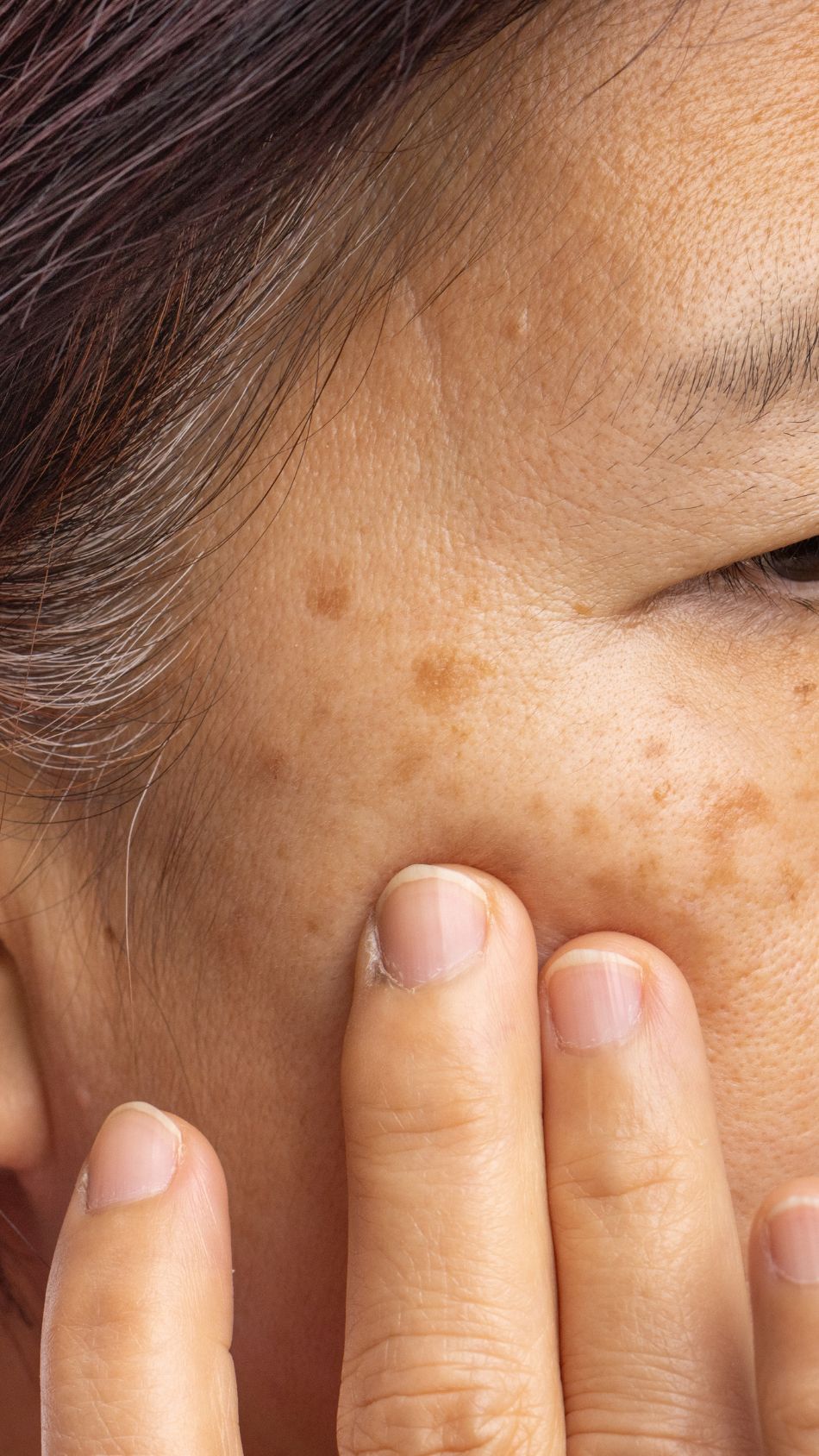
Hyperpigmentation is a common harmless skin condition and can affect both men and women.
Pigmentation and spots on the skin usually appear as a result of the overproduction of melanin in certain areas of the body motivated by factors such as sun exposure, pregnancy, hormonal changes, aging, genetics, medications, some skin diseases, insect bites, acne, waxing, harsh scrubs, and other factors.
Melanin dye is the substance responsible for giving the skin its color, which is made by Melanocyte cells, when those cells are damaged or become unhealthy, they produce too much melanin.
Spots may range in color from gray, light brown to dark brown, and usually don’t cause any pain to the person, but it often leaves a feeling of dissatisfaction, because of the look which is often annoying, pushing people to try manypopular homemade methods or some skin lightening creams and products to reduce the spots.
Multiple treatments target pigmentation, which is often annoying depending on the depth and color, and determining the appropriate procedure depends on the nature and severity of the condition.Therefore, we have to diagnose the hyperpigmentation type in order to choose the right treatment for each case.
We should ask about the medical history when we start to notice the spots, and if there is any medication, also examine the skin using a special Wood light, do some blood tests to roll out any hormonal issues or vitamins deficiency, and take a biopsy for checking any abnormal skin cells if needed.
The three most common types of hyperpigmentation include Age spots (sunspots) or solar lentigines, Melasma, and Post-inflammatory Hyperpigmentation.
Hyperpigmentation is often harmless and may require no treatment at all. However, some people may feel self- conscious and prefer to treat it. For that, there are some lifestyle changes, and various treatment methods may help. The first line of treatment is avoiding sun exposure, applying daily sunscreen SPF 50, and treating the underlying cause as stop taking some medication or vitamin replacement.
The most common treatments available are:
Chemical peeling, due to its containment of glycolic acid, salicylic acid, and other acids treats dark spots by removing the upper layers of the skin (epidermis), allowing it to regenerate and make it more balanced in terms of color. The side effects of Chemical peeling can be redness, irritation, and skin sensitivity regardless of skin type or color, but darker skin is more likely to have more side effects. If peeling is used on dark skin, salicylic acid is the best option because it is anti-inflammatory and can reduce the risk of post-inflammatory hyperpigmentation
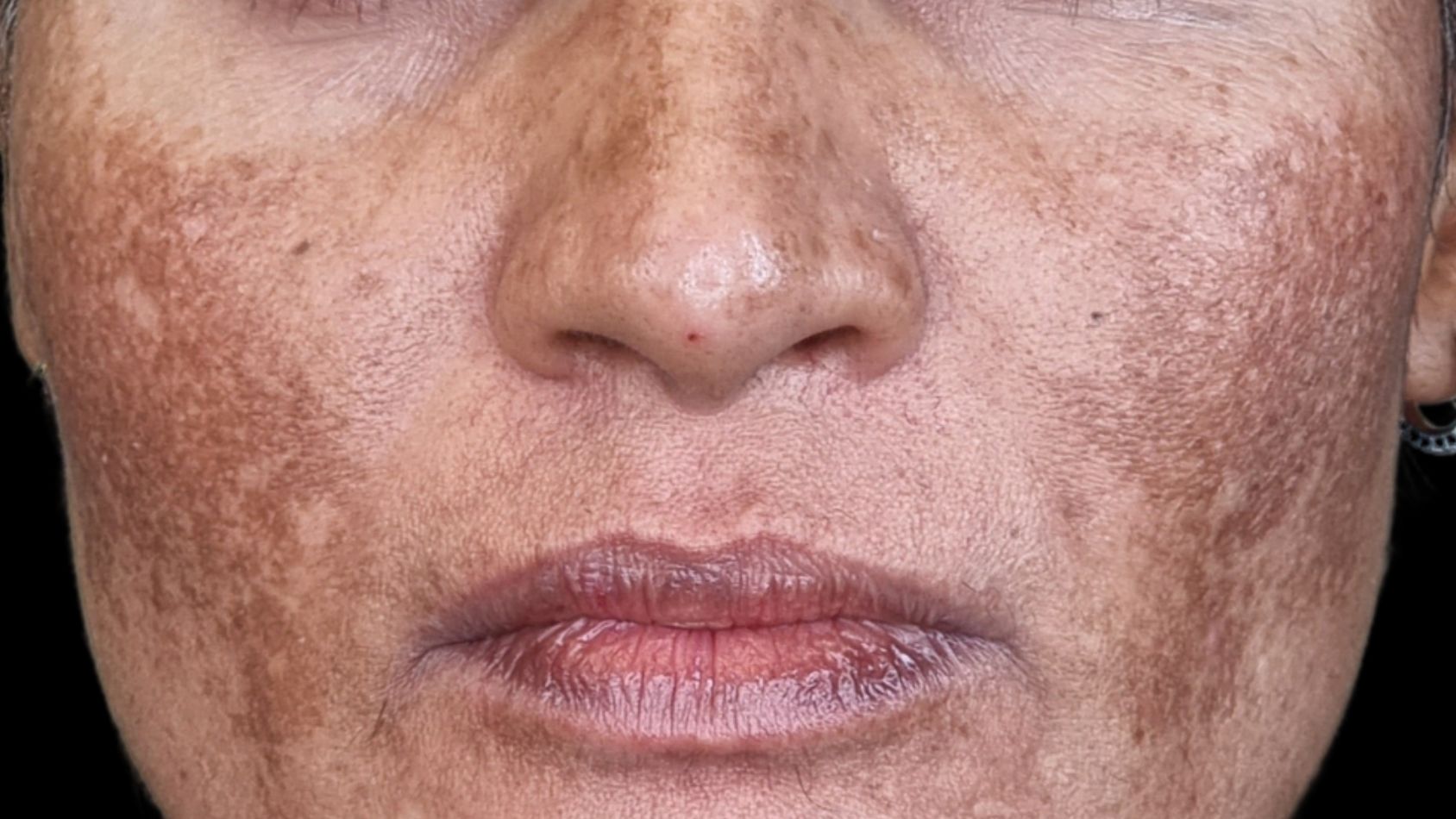


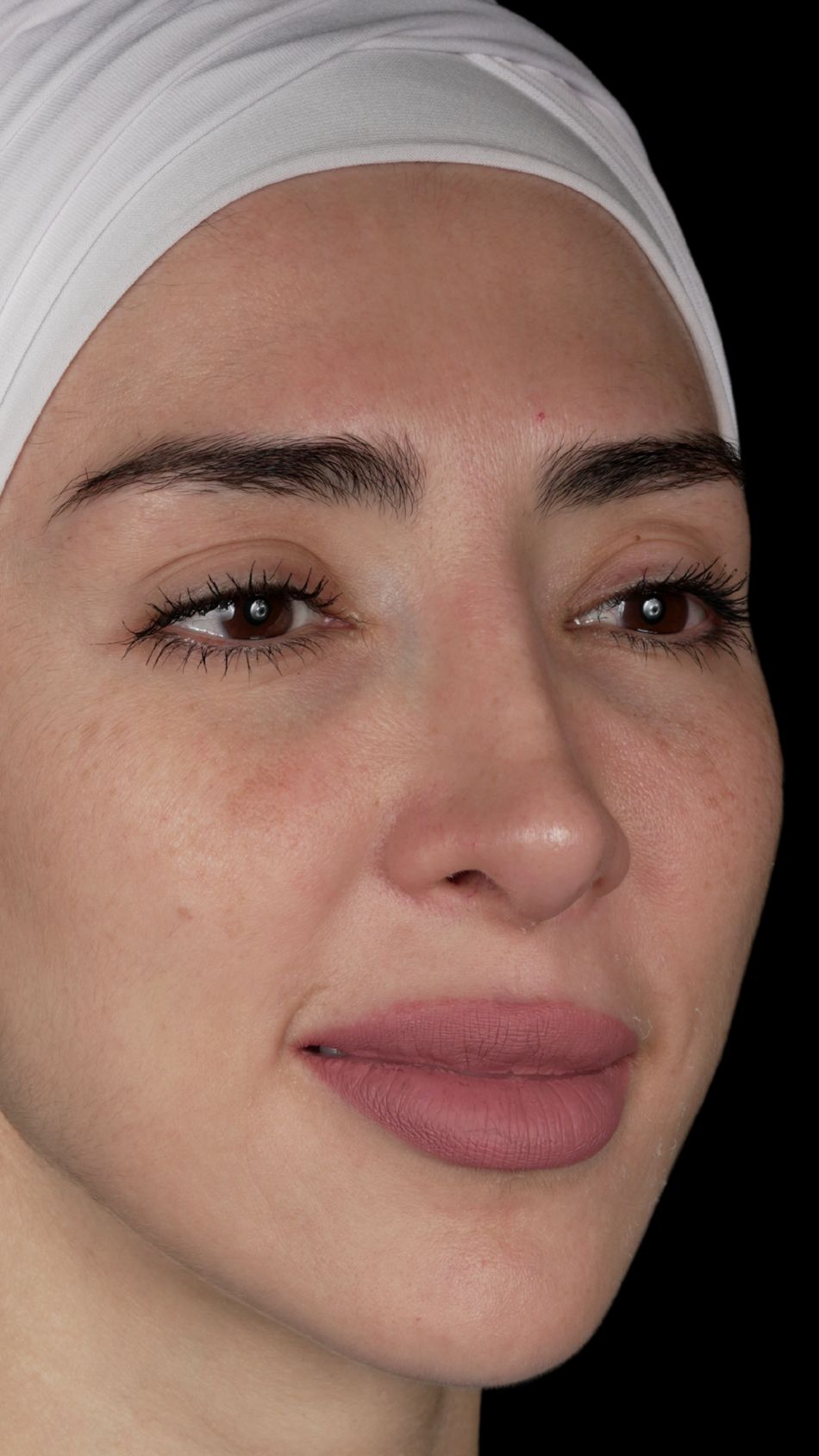
These injections are common lightening techniques to treat deep and superficial pigmentation, unifying skin color. Mesotherapy contains minerals, vitamins and enzymes that inhibit the functioning of the cells responsible for skin color and pigmentation, and accelerate skin rejuvenation. It is very suitable for the treatment of sun pigmentation. In some cases, you may need to undergo several mesotherapy sessions to achieve the desired results, as well as with plasma and stem cell injections.
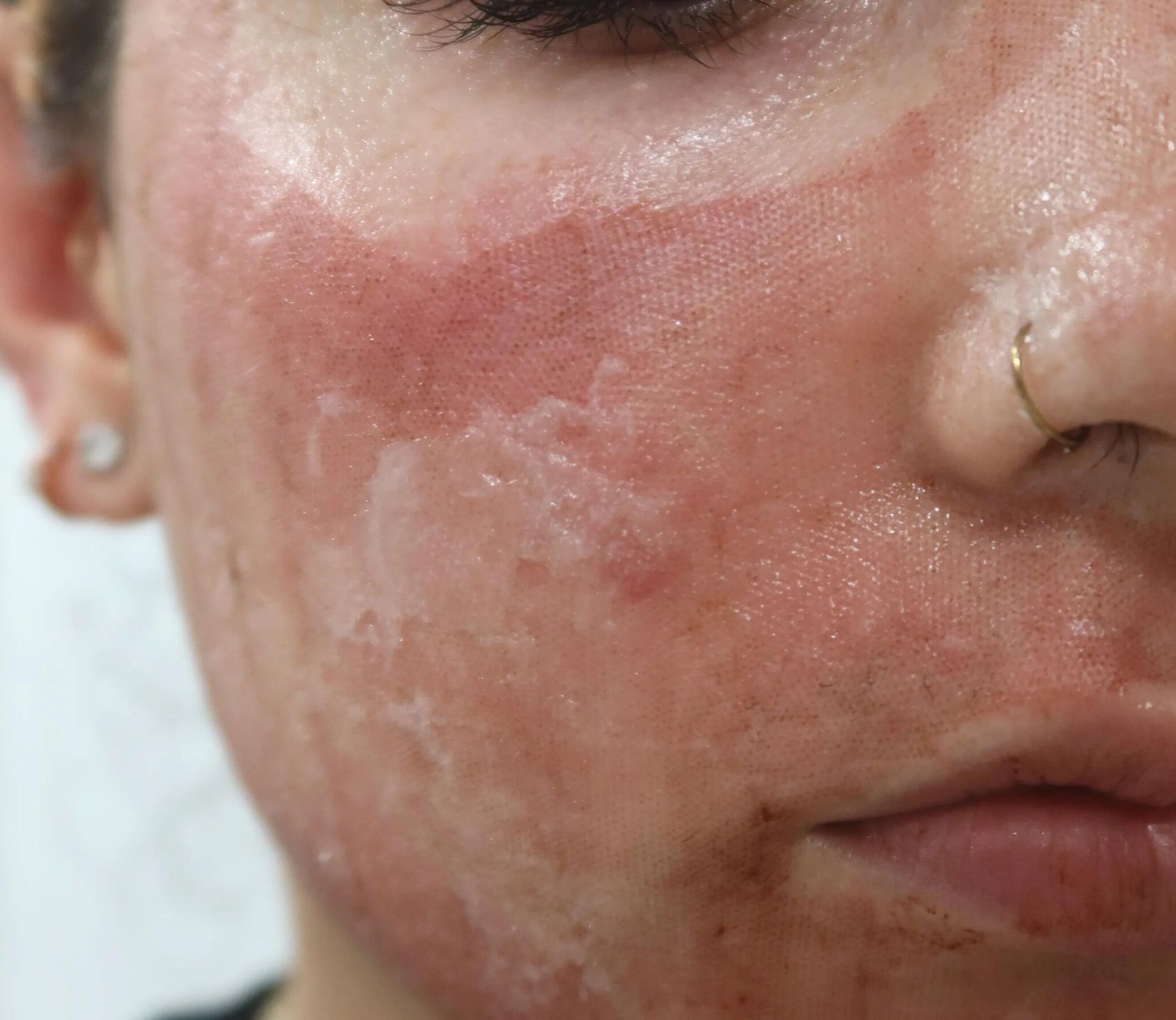
The ablative and non-ablative laser reduces hyperpigmentation and stimulates skin tissue regeneration by targeted beams of light and heat on the targeted area. This procedure may have some side effects, such as redness and swelling, so it is necessary to clarify all the treatments to the patient before performing it, the patient may need more than one session depending on the depth of the spots.
Choosing the most appropriate laser type depending on the type and color of the skin is very important, and this type of treatment is often chosen for light skin owners, because heat may activate the functioning of pigment cells in people with dark skin at a higher rate and therefore have the opposite effect and lead to more pigmentation.
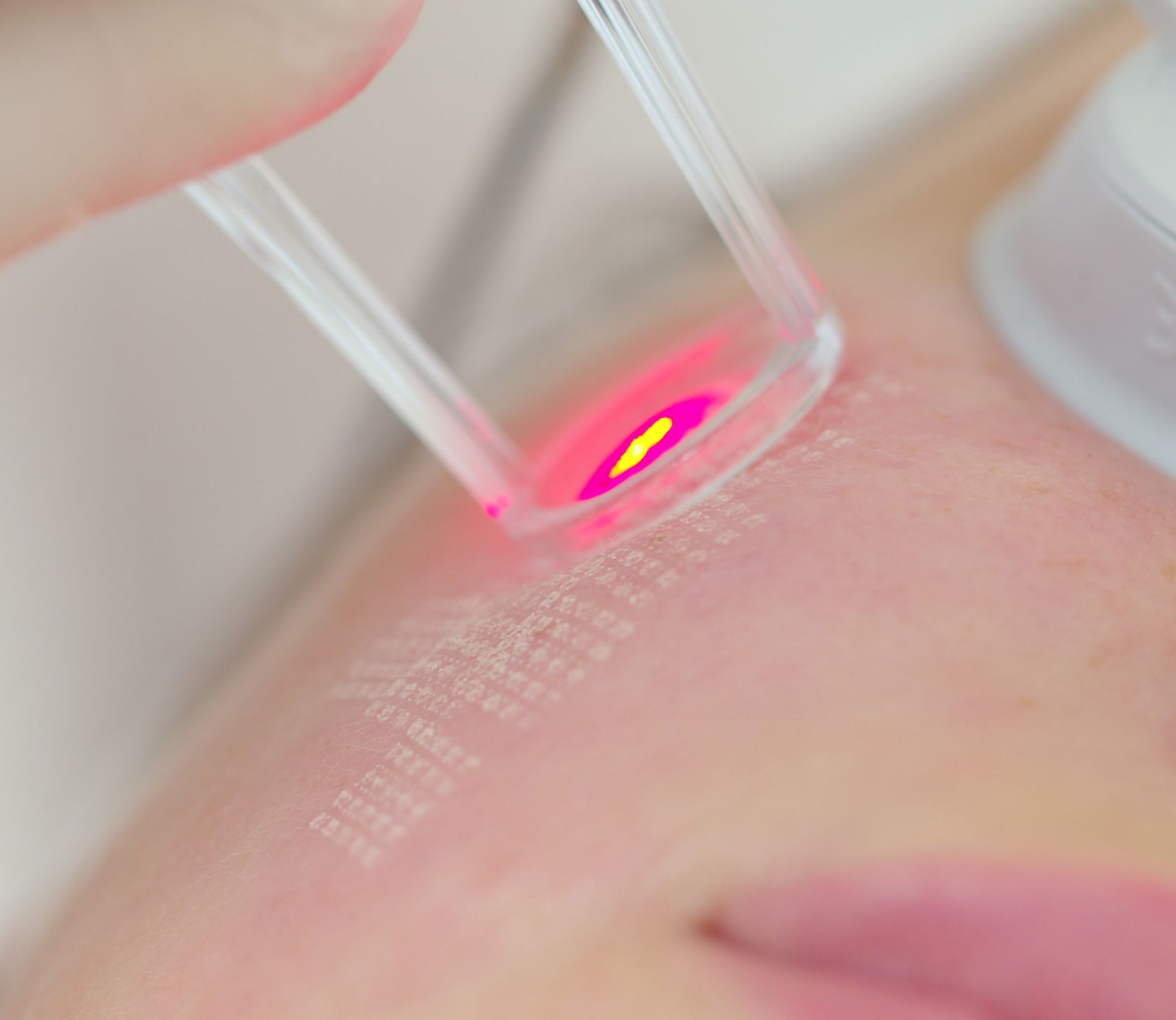
The Pico and Q Switch lasers, these techniques work. through several lengths of light waves that target surface and deep skin layers to fragment and break up chromosome cells, allowing the skin to absorb them again and release them through the lymphatic system. This treatment is suitable for all skin types, and the number of sessions varies depending on the condition and when the desired result is reached.

IPL therapy is known as a photofacial, it stimulates collagen growth within the dermis, usually requires multiple sessions for better results, and can be used with all types of pigmentation, especially with flat spots, and will reduce the appearance of freckles, wrinkles, spider veins, and enlarged pores.
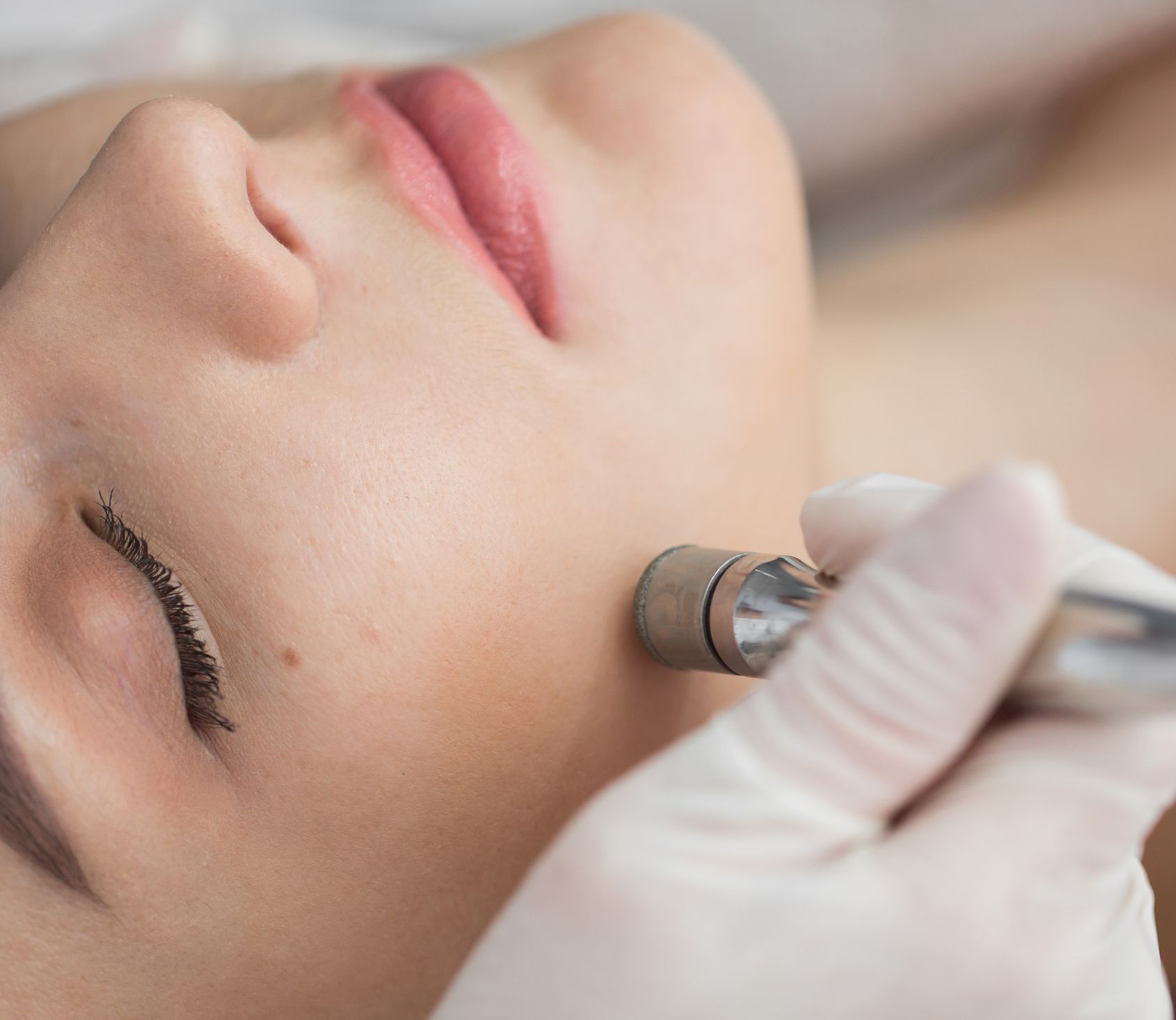
A skin exfoliation method using sand crystals and particles to remove the outer layers of the skin, and stimulate the growth of new layers to improve the appearance of signs of skin progress, such as pigmentation, wrinkles.
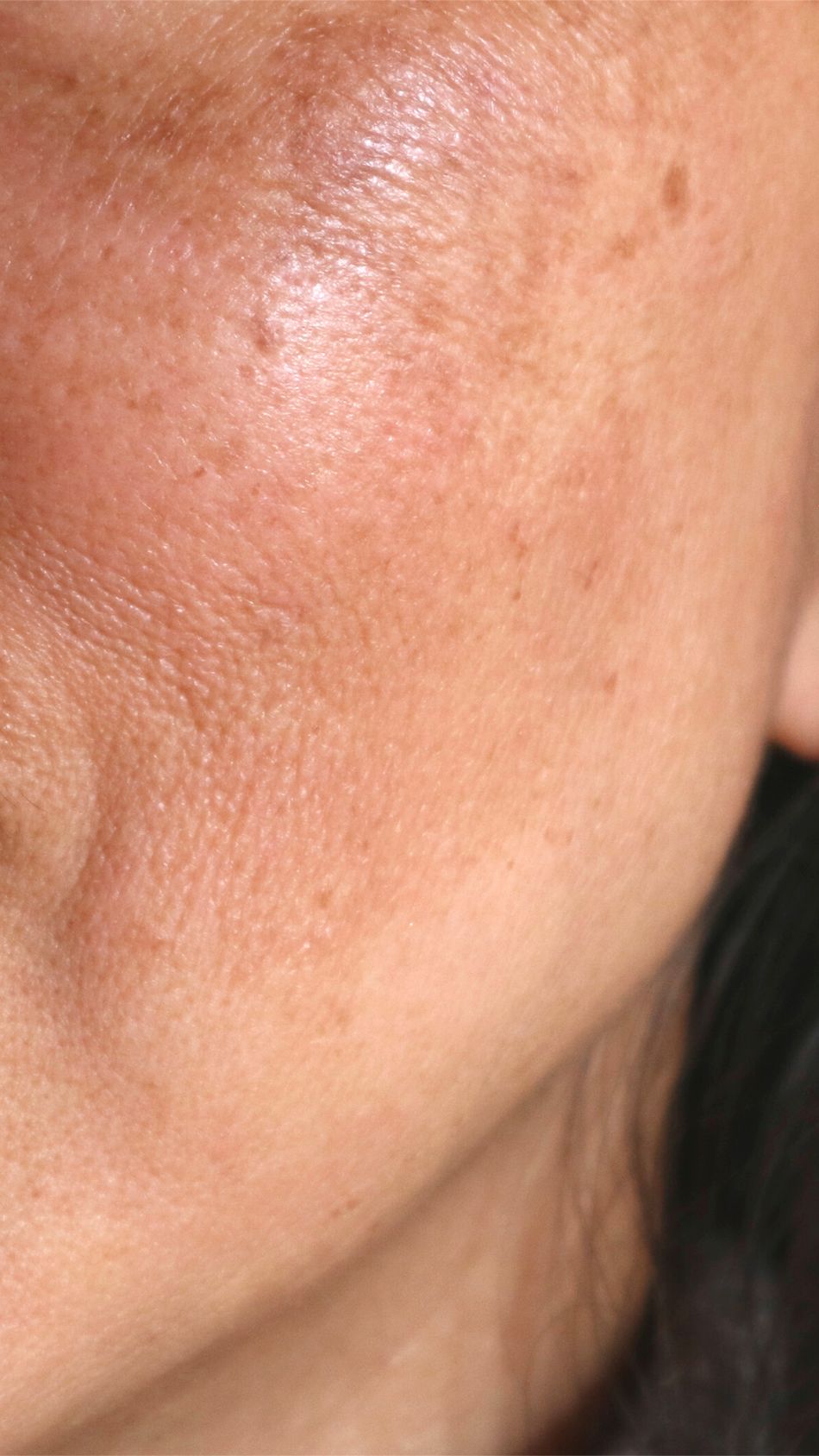
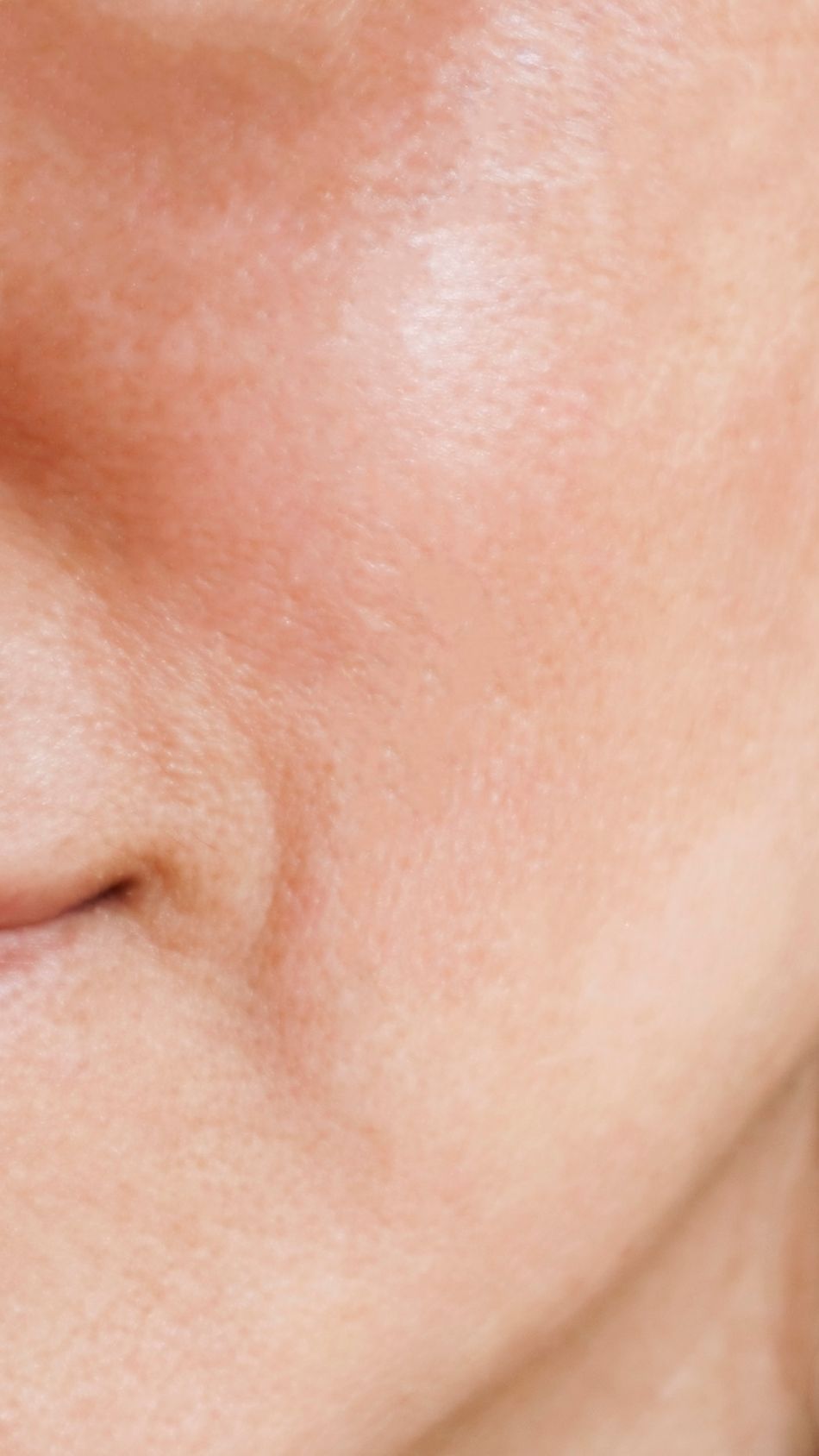
Perhaps the most popular solution for skin lightening is topical solutions that contain hydroquinone. Although these creams were previously available over-the-counter, the Food and Drug Administration (FDA) changed the state of hydroquinone in 2021, and it is now only available as a prescription. Doctors recommend that products containing hydroquinone be used only in the short term. If a person suffers from unusual irritation or blackness of the skin or any other side effects, it should stop using it immediately, as its misuse and length of treatment may be counterproductive and increase pigmentation, and are considered one of the most difficult types of pigmentation to treat.
Topical creams prescribed by the doctor can help in accelerating the treatment of hyperpigmentation, which may contain Azelaic acid, Corticosteroid, Glycolic acid, Hydroquinone, Kojic acid, Salicylic acid, Tretinoin, Vitamin C and Niacinamide.
Hyperpigmentation is a lifelong condition, Treatments can take time, a few months or a year to work, and it can appear over time, especially if there is no protection from the sun or any triggers.
Furthermore, Skin tone plays a role in the intensity and length of the treatments.
There are some signs and symptoms if it is associated with pigmentation should see a dermatologist to roll out any serious condition, which includes redness, hotness, tenderness or pain, itchiness and blood, and pus leaking.
This article is Medically reviewed by : Dr. Iman Itani MBBS.GP. Aesthetic doctor.
